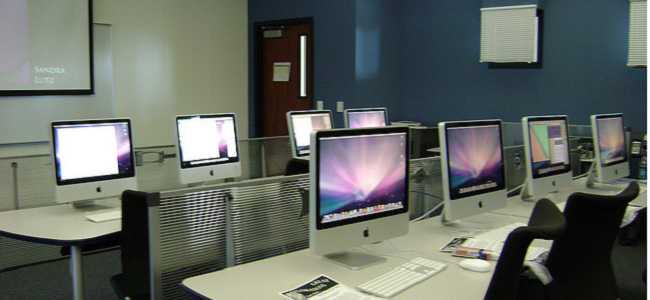This question is still the subject of many debates, and was at the forefront of my mind when receiving 1:1 devices at the start of my journey with my first Y6 class! After my NQT year, which began in September 2013, I was asked to move into Y6, a daunting thought at the time. Not only that, but a set of brand new 1:1 devices were wheeled into my classroom for the children to use. At first I didn’t know where to start, as there were so many different things the children would be able to do with them. The question that really struck me was ‘what real impact would they have on the children’s progress?’
We have become a society that is ever more connected to our technology. Next time you are at a restaurant, in line at the store or travelling, watch the number of people who are using their phones, tablets and other devices. We are a generation awash in technology and the information it provides us; we have become iCitizens. What are the rules, policies or laws for us as digital citizens? Little direction is being provided and without help, people are finding that mistakes are being made and often their results have a large audience.
Maps are objects of fetish; there is something special about tracing a route across the London Underground map or blowing the dust off maps that chart countries which don’t even exist anymore. The thrill of places we have never been, or the familiarity of home, all appeal, and can be imagined through the medium of maps. It is no coincidence that with the power to look at almost the whole (can’t find out exactly how much!?) of the globe, the first search the people do in Google Earth is to look at their house. In the classroom, maps can intrigue learners, and be used to add context and depth to learning across the curriculum. Long the reserve of Geography departments, maps that you can access with technology are a cost-effective way to bring the real world into the classroom - giving extended meaning to many subject disciplines.
John Dewey, probably the most influential of all American philosophers, was born in Vermont in 1859. After graduation from the University of Vermont he received a PhD from The John Hopkins University and taught at a number of major universities, gaining an international reputation for his contribution to the pragmatic approach to philosophy (Dewey, 1938).
We can all agree that when technology is used correctly in the classroom it can both support and enhance learning. However, when we consider outdoor learning, should we be utilising new technological innovations? Or is it vital that outdoor learning spaces continue to provide a tech-free zone for today’s digital children?
3D printing is an exciting field, but how should schools approach it if they’re interested? James Hannam, experienced teacher and tech-innovator, discusses how he’s used 3D printers over the years, and looks at the options available to teachers.

After reading Peter Jones’ excellent article on 3D printing in the latest Innovate My School magazine, I wanted to offer my findings as a teacher (of all things geek). I am hoping that this piece will give you an informal starting point to the possibilities and considerations of 3D printing in the classroom.
It’s a brave new world for education, particularly with the growing popularity of portable devices and flipped learning. Teacher and digital strategist Jane Basnett gives her finest tips on how a school can fully embrace the future.

A digital strategy must take into account what makes an excellent lesson, and will then plan to ensure that teachers make use of technology in a creative and meaningful way that enriches the teaching. Successful use of technology in the classroom goes hand-in-hand with other good teaching techniques, all of which can be enhanced by technology. The two (technology and traditional teaching methods) are not mutually exclusive. There must be a blend of the two strands in order to bring about successful and effective teaching. Schools will need to spend time training teachers to use the latest digital tools in conjunction with relevant methodologies to ensure ultimate success.
Edtech is progressing at an incredible speed, and it can often be difficult to see what’s ahead. Dominic Norrish, group director of technology at United Learning takes a look at what we can expect for tablets and 1:1 learning.

Innovate My School asked me to write about ‘the classroom of 2017’ a while back, and I responded with a thousand words of wild speculation and unfounded assertion. It was a lot of fun to write, and when 2017 finally rolls around, what a laugh we shall all have (from astride our hover-fridges) at some of the stupider sentences. And apparently their appetite for the barely-credible knows no bounds – this time they want to know what the future holds for tablets in education…
In 1994 I started my teaching career. I am a modern languages teacher. I love languages, and I love inspiring my pupils to learn about other languages and cultures. When I first entered the classroom all those years ago, my main aim was to be a good teacher. I had not given much thought to how I was going to achieve my aim, or indeed what it even meant to be a good teacher. I was young, enthusiastic, full of energy and positive. Surely, with these attributes, I would achieve my goal, no matter how idealistic it may have seemed?

A community-driven platform for showcasing the latest innovations and voices in schools
Pioneer House
North Road
Ellesmere Port
CH65 1AD
United Kingdom